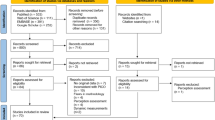Abstract
The present study was conducted to examine whether the thumb rule of Leonardo da Vinci could be an objective method in the determination of the natural and artistic proportions of human face. In this study, a sample of 400 subjects (200 male and 200 female, 22–25 years old) was used. Measurements were made of the length of thumb, the length of ear, the approximate distances between the hair line and the glabella or eyebrows, between the glabella or eyebrows and the tip of the nose and the distance between the nose and the chin, and the distance between the ear and the lateral aspect of the eye. The results obtained in the males and females showed significant (p<0.01) correlations between the length of thumb and the proportions of the face examined in the study. Additionally, the height of the face was found to be almost three times the length of the thumb. However, the measurements obtained from female subjects were on average smaller than those taken from males. The results obtained in this experiment could be of value in understanding of the evaluation of the face for the people working in plastic surgery or art.
Résumé
La présente étude a été conduite pour examiner si « la règle du pouce » de Léonard de Vinci pouvait étre une méthode objective dans la détermination des proportions naturelles et artistiques du visage humain. Dans cette étude, 400 sujets ont été utilisés : 200 hommes et 200 femmes âgés de 22 à 25 ans. Les mesures ont été faites sur la longueur du pouce, la longueur verticale de l'oreille, la distance approximative entre la ligne d'insertion des cheveux et la glabelle ou la ligne des sourcils, entre cette ligne et la pointe du nez, et la distance entre la pointe du nez et le menton, et la distance entre les oreilles et l'angle latéral des yeux. Les résultats obtenus chez les hommes et les femmes montrent une corrélation significative (p< 0.01), entre la longueur du pouce et les proportions de la face examinées dans cette étude. D'autre part la hauteur du visage semble correspondre dans la plupart des cas à trois fois la longueur du pouce. Cependant les mensurations obtenues chez les femmes étaient en moyenne plus petites que celles obtenues chez les hommes. Les résultats obtenus dans cette expérimentation peut être d'une certaine valeur dans la compréhension de l'évaluation du visage pour les spécialistes en chirurgie plastique, en Arts Plastiques.
Similar content being viewed by others
References
Backhouse KM, Hutchings RT (1989) A colour atlas of surface anatomy. Wolfe Medical Publications, London, pp 22–23
Bean J, Kramer JR, Khouw FE (1970) A simplified method of taking radiographs for cephalometric analysis. J Oral Surg 28: 675–678
Bell WH, Profit WR, White RP (1980) Surgical correction of dentofacial deformities, vol 1. Saunders, London, pp 114–128
Czernecki ST, Nanda RS, Currier GF (1993) Perceptions of a balanced facial profile. Am J Orthod Dentofacial Orthop 104: 180–187
Epker BN, Wolford LM (1975) Middle third face osteotomies. J Oral Surg 33: 491–514
Jefferson Y (1993) Facial esthetics-presentation of an ideal face. J Gen Orthod 4: 18–23
Johnson NA (1976) Xeroradiography for cephalometric analysis. Am J Orthod 69: 524–526
Khouw FE, Proffit WR, White RP (1970) Cephalometric evaluation of patients with dentofacial disharmonies requiring surgical correction. Oral Surg 29: 789–798
Moorrees CFA, Kean MR (1958) Natural position: a basic consideration for analysis of cephalometric radiographs. Am J Phys Anthropol 16: 213–234
Parramon JM (1990) Couno dibujan la cabeza humana y el retrato. Parramon, Barcelona, pp 10–15
Peck H, Peck S (1970) A concept of facial esthetics. Angle Orthod 40: 284–318
Steiner CC (1959) Cephalometrics in clinical practice. Angle Orthod 29: 8–29
Walker GF (1972) A new approach to the analysis of craniofacial morphology and growth. Am J Orthod 61: 221–230
Author information
Authors and Affiliations
Rights and permissions
About this article
Cite this article
Oguz, Ö. The proportion of the face in younger adults using the thumb rule of leonardo da vinci. Surg Radiol Anat 18, 111–114 (1996). https://doi.org/10.1007/BF01795228
Received:
Accepted:
Issue Date:
DOI: https://doi.org/10.1007/BF01795228




